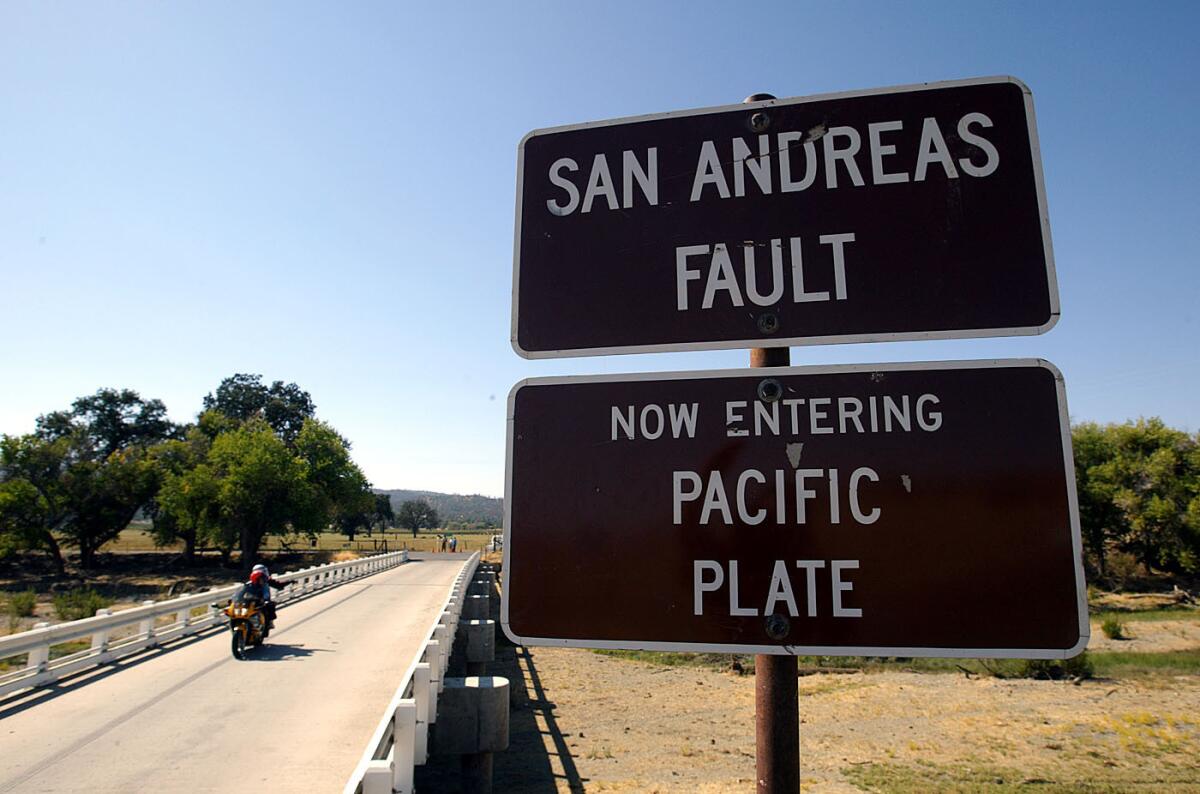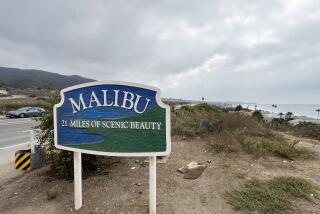Increase in earthquakes may be tied to groundwater pumping

- Share via
For years, scientists have wondered what are the forces that keep pushing up California’s mighty Sierra Nevada and central coast ranges, causing an increase in the number of earthquakes in parts of Central California.
On Wednesday, a group of scientists offered a new intriguing theory: that the quakes are being caused in part by pumping of groundwater in the Central Valley.
“These results suggest that human activity may give rise to a gradual increase in the rate of earthquake occurrence,” said the study published in the journal Nature Wednesday, written by scientists at Western Washington University, University of Ottawa, University of Nevada, Reno and UC Berkeley.
Using new GPS data, the scientists found a surprising observation that the mountains closest to California’s thirsty Central Valley were growing at a faster-than-expected rate compared to ranges further away -- a rate of 1 to 3 millimeters a year, enough to lift them by less than half a foot over the last 150 years.
An answer introduced by the scientists that would explain this is the loss of groundwater in the Central Valley as it produced crops that feeds the nation. Groundwater is very heavy, and depresses the Earth’s upper crust like a weight.
Remove that weight, and the Earth springs upward — and that change in pressure can trigger more small earthquakes.
“It reduces the forces that are keeping the fault clamped together — leading to more small earthquakes during dry periods of time,” said Colin B. Amos, assistant professor of geology at Western Washington University, the lead author of the study.
“During wet periods of time when the fault is loaded down, the forces that are keeping the fault clamped down are greater. It inhibits the sliding of the fault,” Amos said.
“Over the long term, because we’re losing more groundwater, it could give rise to more seismicity by reducing these overall forces,” Amos said. “Our model of what the groundwater is doing might explain those two things: showing that humans may have a hand in changing the state of stress on the fault, and therefore, rates of small earthquakes over time.”
Groundwater has been slowly depleted in the Central Valley to quench the thirst of farms and cities since the mid-1800s, irrigation that prompted the disappearance of Tulare Lake, once the largest body of fresh water west of the Mississippi. Since that time, the Central Valley’s groundwater reserve has lost about 38 cubic miles of water — enough to drain Lake Tahoe.
According to the U.S. Geological Survey, about 20% of the nation’s groundwater comes from Central Valley aquifers, making it the second-most-pumped aquifer system in the United States. The Central Valley produces one-quarter of the nation’s food, including 40% of fruits, nuts and other food.
Previous research has suggested there are both seasonal increases and long-term increases in small earthquakes, under magnitude 5, in the Parkfield area of Central California in southern Monterey County.
Observations show that in Parkfield, there are more small earthquakes in dry months than in wet months. Also, the number of small earthquakes every year has roughly doubled between 1984 and 2005.
The study published Wednesday does not suggest the next Big One to hit Los Angeles or San Francisco will be caused by human activity, Amos said.
“Large earthquakes are going to occur on the San Andreas fault no matter what we do,” Amos said. But what is important is the idea human activity could trigger more seismic activity.
“It’s really opening up a possibility that humans are changing stresses on faults,” Amos said. “It’s a simple realization that human use of groundwater is having small but perhaps measurable impacts on the San Andreas fault.”
More to Read
Sign up for Essential California
The most important California stories and recommendations in your inbox every morning.
You may occasionally receive promotional content from the Los Angeles Times.











